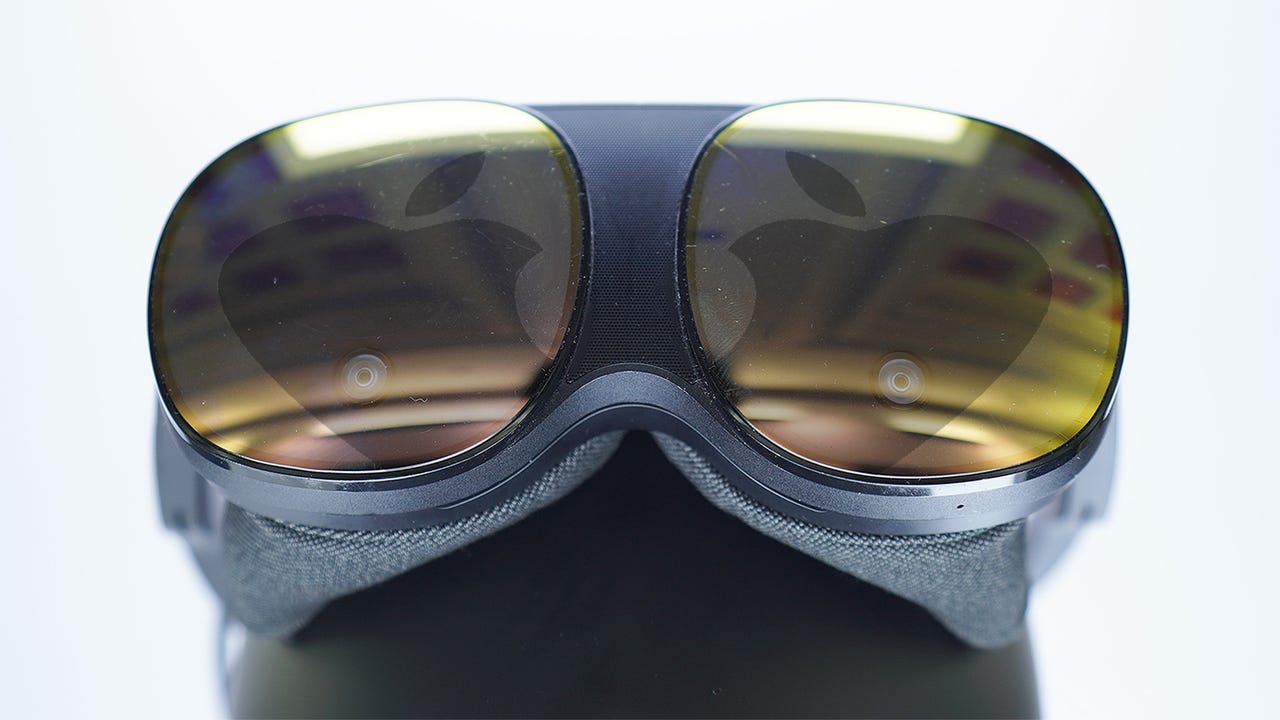
Can the earlier release of the HTC Vive XR Elite win the hearts of headset users before Apple’s imminent entry? June Wan/ZDNET
You would think that the world’s largest tech show would feature the poster child of it all: Apple. But this year, like many before it, saw no physical presence of the company whatsoever.
Still, I couldn’t help but draw comparisons between what companies were announcing and the existing technology that Apple had already set benchmarks for. Some of them are more obvious than others.
More: Best of CES: 6 innovations that will shape the future
From satellite communication to MagSafe-enabled charging to 5K displays, the barrage of new announcements is a testament to Apple’s product dominance. It’s also a battle cry for the market competition that’s about to unfold. Here’s a rundown of some of the biggest products and services that will go toe-to-toe with Apple in 2023.
1. Wireless Power Consortium – MagSafe
Twelve South’s minimal MagSafe charging dock keeps your iPhone powered and perfectly angled. Twelve South
I’ll admit, as an Android user, I’ve always been envious of Apple’s MagSafe chargers. Whether it’s a handy puck that latches onto a car vent or a portable battery pack that fits snuggly onto the back of the iPhone, there is simply no one-to-one alternative on the Android side of things.
That ends with Qi2, an upcoming wireless charging standard developed by the Wireless Power Consortium (WPC) alongside, believe it or not, Apple. The new technology will be implemented across mobile and wearable devices, with the goal of improving energy efficiency and faster charging. Ultimately, you can expect to see more gadgets supporting the familiar magnetic-based snapping mechanism that Apple’s MagSafe popularized.
More: Best MagSafe accessories for iPhone
A visit to WPC’s CES booth even showed me how Qi2 will be used to power kitchen appliances, with users able to set their blenders, air fryers, and even coffee machines on top of wireless charging coils to power them. But that expansion won’t happen until early 2024, a WPC representative told me.
2. HTC – Apple’s rumored VR/AR headset
The Vive XR Elite covers the bases of a flagship mixed-reality headset at $1,099. June Wan/ZDNET
Long have we waited for Apple’s AR/VR headset, and it certainly seems like there’s finally a light at the end of the tunnel. A recent Bloomberg report suggests that Apple will launch its first mixed-reality headset in the spring of this year, ahead of its yearly Worldwide Developers Conference. If that holds true, then companies like HTC have the first half of 2023 to make a compelling case for both VR enthusiasts and metaverse skeptics to make the early jump.
More: CES was huge for AR and VR. Here’s everything that was announced
Fortunately, HTC’s latest Vive XR Elite is a competent headset that, from our initial hands-on, impresses with a lightweight (625g) and portable build, diopters for glasses-free visibility (Something I’m hoping Apple will do as well. I mean, Tim Cook wears glasses!), and the ability to connect it to a phone or computer wired or wirelessly. Should Apple’s upcoming headset be anything similar, HTC may have the leg up with its relatively cheaper $1,099 price tag and maturity within the VR space.
3. Qualcomm – Emergency SOS
The Qualcomm Snapdragon 8 Gen 2 chipset will be prevalent across flagship Android phones later in the year. Qualcomm
Apple introduced satellite communications to the masses when it launched the iPhone 14 series with Emergency SOS back in September last year. In 2023, Android smartphones equipped with Qualcomm’s Snapdragon 8 Gen 2 and X70 modem will be able to access similar technology, allowing users to exchange text messages via Iridium’s network of satellites. That, of course, means that the feature, aptly named Snapdragon Satellite, will likely be available on flagship smartphones only, with an expected service fee to follow.
More: Android phones will soon get iPhone-like SOS satellite texting
Snapdragon Satellite comes at a time when Apple has noticeably shifted its mobile focus onto more protective features, ones that may not be used every day but can very well save you from life’s most dangerous encounters when needed. However, Qualcomm is going beyond emergency phone calls with two-way messaging. This may mean future smartphones are much more functional even when they’re taken outside of carrier coverage zones.
4. Samsung – Studio Display
Samsung’s 5K ViewFinity S9 monitor looks awfully similar to Apple’s Studio Display, and I like it. June Wan/ZDNET
Apple didn’t pioneer the 5K office monitor, but its $1,599 Studio Display is certainly a top choice among industry professionals and content creators, albeit an expensive one. That gives Samsung’s own 5K monitor, the ViewFinity S9, an advantage with its expected lower price tag, if true.
More: Samsung’s 5K ViewFinity S9 monitor is a new Apple Studio Display rival
Samsung also outdoes Apple in several regards here: It has a matte display versus Apple’s glossy (you’ll have to pay $300 more for the nano-texture finish), a better variety of ports, a physical power button (yes, that’s a pro), and a detachable 4K SlimFit webcam for virtual meetings and those concerned with privacy.
From my hands-on look at the Samsung monitor, it’s clear to me that the company is going after Apple’s lunch with this one. Choosing between the Studio Display and the ViewFinity S9 really boils down to what ports you need on a monitor, how much you’re willing to spend, and whether or not brand loyalty means anything to you. Even then, this is easily the closest competitor that Apple has had in the monitor space in a long time.




